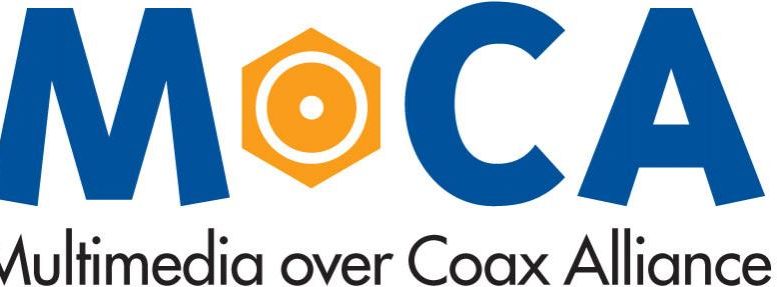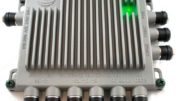What is MoCA?
In 2004, the Multimedia over Coax Alliance was formed. The goal was a simple one: most people had high-quality coaxial cable throughout their homes, but distributing content from one place to another was usually done with ethernet cables. Most people didn’t (and still don’t) have ethernet cables strung throughout their homes. So, MoCA aimed to create a standard for using those coax cables to get content from place to place.
Why is MoCA important?
MoCA is the technology that makes multi-room viewing possible. MoCA is what lets a company like Verizon offer high-speed interactive services. Most important, MoCA is a technology that is designed specifically for multimedia, in other words for audio and video.
What’s so wrong with ethernet?
Ethernet is a standard for getting information from one place to another. It was designed in the 1970s for big computers to talk to each other over fairly expensive, yet unreliable cables. Ethernet is designed from the bottom up to provide a “bumpy” ride for data, because data doesn’t need a “smooth” ride. Data over ethernet stops and starts, and sometimes the same information is sent multiple ways to make sure that every one and zero is perfect. Even though a home ethernet connection could be 100 times faster than what you’d need for high-definition television, it still might have problems because it’s not designed for it.
Add to that, even though ethernet cables are inexpensive, they’re not as cheap as coaxial cable. And yet, they aren’t as reliable over the long term. An ethernet cable is made up of 8 wires in a sheath. These are really thin wires that could break easily. On the other hand coaxial cable has four parts: the inner wire, the insulating core, the outer sheath, and the protective rubber casing. Plain and simple, that’s less to break.
What’s so special about MoCA?
MoCA is designed specifically for a smooth ride, although it’s less worried about getting every one or zero absolutely perfect. Video and audio data travels around your home at 10-40 megabits per second, in other words 10 million ones and zeros every second. Even if you were able to see or hear the difference that a single missed one or zero made, the software inside your TV or receiver would probably have found the problem and figured out a way to mask it.
MoCA is also designed for low latency. The easiest way to think about latency is to go to a web page. Between the time you hit the Enter key and the time that something starts to show up on the screen… that’s latency. It’s the time that it takes the whole system to respond to what you want it to do. Ethernet connections are actually designed to have high latency (high measured in milliseconds, so it’s still not so bad.) High latency is like stopping at the edge of the cliff and deciding if you really want to drive forward. It can save you in critical situations; that’s why it’s there. On the other hand, pressing the wrong button on your DVR isn’t likely to have life-altering consequences. Sure, you might delete your wife’s favorite program but it’s not likely to be worse than that.
Low latency means a fast response and that’s just what you want when you push a button on the remote. MoCA’s got it.

Who uses MoCA?
By the middle of 2012, Verizon, AT&T, Dish Network, and DIRECTV will all use MoCA in their home setups. Unfortunately, each one has implemented the system differently. For example, DIRECTV’s implementation uses the DECA (DIRECTV Ethernet Coaxial Adapter) shown above. This little white box allows older DIRECTV receivers to use MoCA by translating it to standard ethernet. Newer receivers have that technology built-in. DECA makes installs easier, but try as you might you can’t use a DECA in place of the adapter that Verizon uses on their systems.
Is MoCA easy to use?
It’s super-easy. It’s designed to connect and go… as easy as plugging in a cable. If necessary, MoCA adapters (like DIRECTV’s DECA) plug into every receiver. Receivers that aren’t designed to be networked use a band stop filter to stop the extra signal in the cable from damaging them. Then, a single point of connection is made to your home network through something like the DIRECTV Cinema Connection Kit and presto, all your connected devices have access to the internet and each other!
Bottom line this for me… why should I care?
MoCA will save you from running ethernet cables throughout your home. It’s much better than wireless because it’s faster and more reliable. Not only that, here’s the magical part about MoCA: It’s not just for TVs and cable/satellite receivers. If you’ve got a MoCA system in place you have an ethernet connection everywhere you have a coaxial cable. In many systems (like DIRECTV’s) all it takes is a splitter to make an extra connection, and with a DECA and power supply you have a network connection that will provide smooth audio and video. In general, though, using a system in this way isn’t supported by the service providers so you should be comfortable with DIY projects.
What’s next for MoCA?
In the coming year, there are two interesting developments on tap for MoCA. First is a truly universal MoCA adapter that works with all current systems. It makes it much easier for the DIY’er. Read the news here and we’ll let you know when they’re available. Second is the creation of MoCA 2.0, which is faster and better in many ways. MoCA 2.0 will be the subject of an upcoming article in this series.
MoCA is a great technology with no real downside. It gives you flexibility, saves you time and money, and it’s only getting better!!





